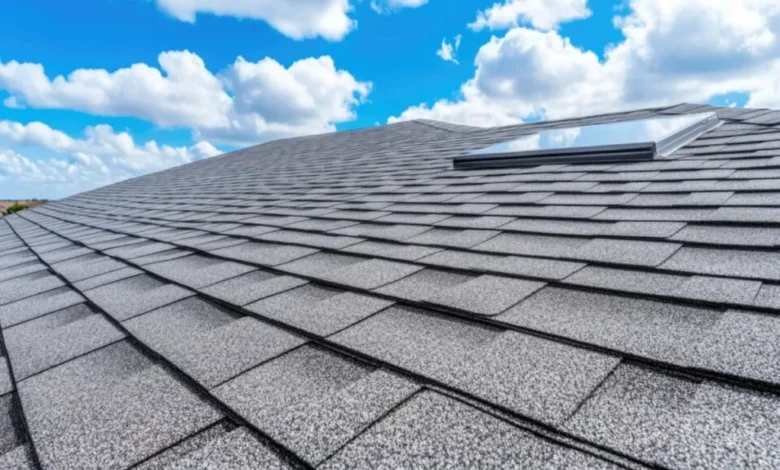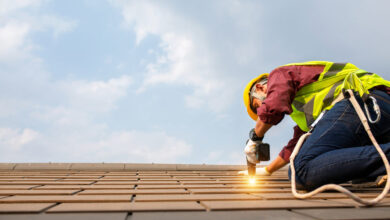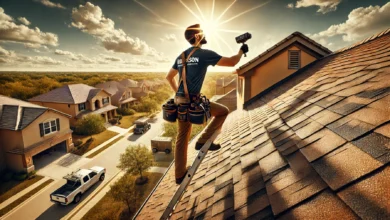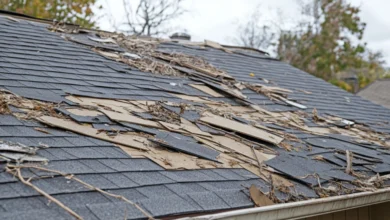How Climate Change is Impacting Roof Lifespans and Replacement Costs?

Climate change is a global phenomenon that influences nearly every aspect of human life and infrastructure. One of the less-discussed yet significant impacts is the effect on roofs—the essential barrier protecting homes and buildings from external elements. With extreme weather events becoming more frequent and temperatures fluctuating widely, the durability and maintenance of roofing systems face unprecedented challenges. We will explore how climate change is reshaping the lifespan of roofs and increasing replacement costs, highlighting the connection between environmental shifts and the structural integrity of buildings.
The Role of Rising Temperatures on Roofing Materials
As global temperatures rise, roofing materials are more stressed, especially in regions that experience prolonged heatwaves. High temperatures cause roofing materials, particularly asphalt shingles, to expand and contract repeatedly. This thermal movement can lead to cracking, warping, and other forms of degradation, reducing the roof’s lifespan. Additionally, intense UV radiation weakens the protective layers of roofing materials, making them brittle over time.
Metal roofs, although more heat-resistant, are also not immune to the impacts of climate change. Prolonged exposure to high temperatures can lead to oxidation and corrosion, especially if the roof is not adequately coated or maintained. These factors combine to reduce the effective lifespan of roofs, increasing the frequency of repairs or replacements. Homeowners and building managers are finding it necessary to invest in heat-resistant materials or innovative cooling systems to combat these challenges, adding to the overall cost of roofing solutions.
The Impact of Extreme Weather Events on Roof Durability
Climate change has increased the frequency and intensity of extreme weather events such as hurricanes, tornadoes, and hailstorms. These events pose a significant threat to the structural integrity of roofs. High winds can tear off shingles or roofing panels, while heavy hail can cause punctures or dents, compromising water resistance. Roofs in hurricane-prone areas must now withstand stronger storms, often exceeding the design standards they were built for decades ago.
Heavy snowfall and ice accumulation are also becoming more prevalent in regions that previously experienced milder winters. The added weight of snow and ice can cause roofs to sag or collapse, particularly if the structure is not designed to bear such loads. In response, many property owners must reinforce their roofs, install heat cables to prevent ice dams or invest in more resilient roofing systems. These adaptations increase upfront costs and ongoing maintenance expenses, contributing to the rise in replacement costs driven by climate change.
The Role of Increased Precipitation and Moisture Levels
Changing precipitation patterns are another significant factor affecting roof longevity. Many areas are experiencing more intense rainfall over shorter periods, leading to issues like water pooling on flat roofs or overwhelmed drainage systems. Water infiltration can damage roofing materials, insulation, and the underlying structure, causing leaks, mold growth, and structural decay. These problems are exacerbated when moisture remains trapped in roofing systems, accelerating the deterioration of materials like wood and asphalt.
Additionally, regions with higher humidity levels are experiencing increased instances of algae and moss growth on roofs. These organisms affect the aesthetic appeal of roofs and degrade the materials over time, especially if left untreated. As a result, property owners are investing more in moisture-resistant materials, enhanced drainage systems, and regular cleaning services, all of which add to the lifetime cost of roof ownership and maintenance.
The Connection Between Climate Change and Roofing Material Innovation
One response to the challenges posed by climate change has been the development of innovative roofing materials designed to withstand harsher environmental conditions. For instance, manufacturers are creating reflective coatings that minimize heat absorption, reducing thermal stress on roofs in hot climates. Similarly, impact-resistant shingles and metal panels are becoming popular in areas prone to hailstorms and high winds.
However, these advancements come at a cost. High-performance materials often carry a premium price tag, increasing the initial investment required for roof installation or replacement. While these materials offer long-term savings through reduced maintenance and longer lifespans, the upfront costs can be prohibitive for many homeowners. Governments and environmental organizations advocate for incentives and subsidies to make these solutions more accessible, but widespread adoption remains challenging.
Rising Costs of Roofing Replacement Due to Climate Change
The financial impact of climate change on roofing is not limited to material costs. Labor expenses are also rising as roofing contractors face a higher demand for repairs and replacements following extreme weather events. Additionally, stricter building codes that respond to climate risks often require more expensive materials and construction techniques, further driving up costs.
Insurance premiums are another factor contributing to the rising cost of roofing replacements. As weather-related damage becomes more common, insurance companies adjust their rates to reflect the increased risk. Many policies now include higher deductibles for roof damage or require homeowners to pay out-of-pocket for upgrades to meet new building standards. These financial pressures make it more challenging for property owners to maintain or replace their roofs, particularly in regions most affected by climate change.
Climate change is reshaping the way we approach roofing systems, from the materials used to maintenance and replacement costs. Rising temperatures, extreme weather events, and changing precipitation patterns place unprecedented stress on roofs, shortening their lifespans and driving up replacement costs. The need for innovative materials and adherence to stricter building codes further adds to the financial burden. We must continue to explore sustainable solutions and policies that address these challenges, ensuring that roofing systems remain resilient in the face of a changing climate. By doing so, we can protect our homes and buildings while mitigating the long-term impacts of climate change on infrastructure.



